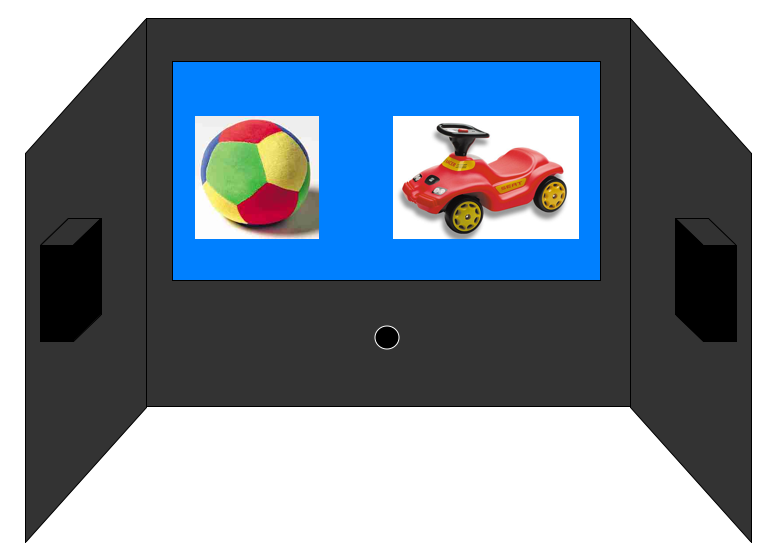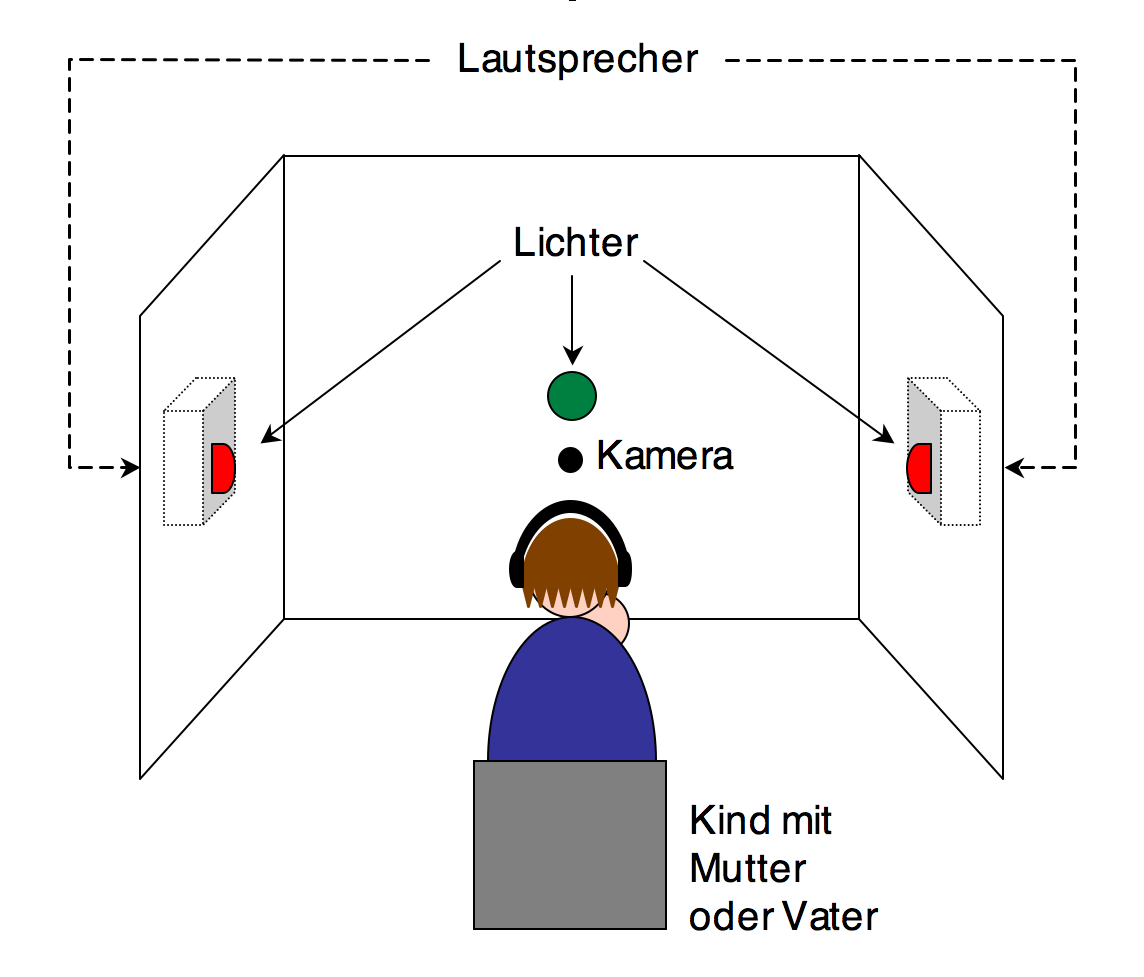Methods
The Switch Method

The Switch Method is used to find out whether babies can perceive small differences in speech sounds - whether they perceive differences between certain sounds. This method has been in use in acquisition studies for many years.
During the test the child sits on their parent's lap, looking at a large screen that displays a multi-coloured pattern. At the same time speech sounds are played over a loudspeaker. First the child hears a certain sequence of sounds. This is interesting to the child, and it looks attentively at the screen. After a short time it knows the sequence and loses interest, looking away from the screen. Then the sound sequence is changed. If the child notices a difference between the old and the new sequence, its interest will reawaken, and it will redirect the attention to the screen.
A video camera below the screen records the head and eye movements of the child. Using these recordings, we can later determine how long the child's attention was held by the various speech sound sequences, and thus whether the child noticed certain differences. The method does not permit conclusions about any one child's perception, but the data collected and processed from a group of children does permit conclusions.
More about the Switch Method in:
- Werker, J.F. & C.L. Stager. 1997. Infants listen for more phonetic detail in speech perception than in word-learning tasks. Nature 388. 381-382.
The Preferential Looking Paradigm

In the Preferential Looking Paradigm, too, the child's attention is observed to gain insights into its linguistic knowledge.
The child sits on their parent's lap in front of a large screen. A short film is presented, showing animals and other objects. At the same time the child hears sentences from a loudspeaker in which the animals and objects are named. Some of the words, however, contain slight mispronunciations.
Our aim here is to see whether children notice these mispronunciations or not. Our assumption is that the child's reactions (eye and head movements) are delayed when the mispronunciation is detected.
As with the switch method, results of the preferential looking paradigm are only meaningful for entire groups of subjects.
More on the Preferential Looking Paradigm:
- Swingley, D. 2003. Phonetic detail in the developing lexicon. Language and Speech 46. 265-294.
The Head Turn Preference Procedure

As in the Switch Method and the Preferential Looking Paradigm, the Head Turn Preference Procedure records direction of attention to determine whether children have a preference for certain speech patterns.
The child sits on their parent's lap during the test. At first the child's attention is attracted by a blinking light. As soon as it looks at the light, the light extinguishes and speech sounds are heard from a loudspeaker, either to the right or to the left of the child, supported by a blinking light next to the active loudspeaker. When the sound comes from one side, the child turns its head in that direction, and as soon as the child's attention turns elsewhere, the sound stops and the light goes out.
The idea behind this method is that the child's attention will be held longer by sound sequences or sentences that are relevant to the language it is learning than by less interesting ones. For this method, too, experimental conclusions can only be drawn from the data collected from groups of subjects.
More on the Head Turn Preference Procedure:
- Jusczyk, P.W., Hohne, E.A. & Baumann, A. 1999. Infants' sensitivity to allophonic cues for word segmentation. Perception and Psychophysics 61. 1465-1476.
